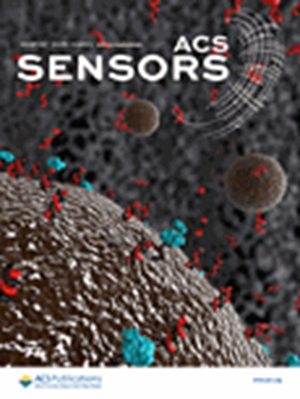Polymer Coating for the Long-Term Storage of Immobilized DNA.
IF 9.1
1区 化学
Q1 CHEMISTRY, ANALYTICAL
引用次数: 0
Abstract
As healthcare systems worldwide demand early disease detection and personalized medicine, electrochemical biosensors stand out as a promising technology to meet these demands due to their sensitivity, selectivity, and rapid response. Specifically, DNA-based electrochemical biosensors are versatile and have been used to identify biomarkers of various infectious diseases. However, there is a significant gap between laboratory-scale proof-of-concept systems and commercially viable technologies. Commercialization of such sensors faces many challenges, with one of the most important being the stability and shelf life of the immobilized DNA. Surface-associated DNA faces thermal degradation, structural changes, and oxidation of tethering thiol groups, which causes DNA stripping from the surface. Currently, technology to support the long-term storage of these sensors at ambient temperatures is limited. Here, we report a novel method to preserve DNA in electrochemical biosensors through the application of a protective coating of poly(vinyl alcohol) (PVA). We show that with our PVA coating, the shelf life of dried, DNA-functionalized electrodes at ambient temperature is a minimum of 2 months. We further demonstrate that the protective capabilities of PVA extend to temperatures as high as 65 °C and that the biological relevance of the assay is not impacted by the coating. Our simple approach to DNA protection supports our understanding of how the electrode interfaces with biomolecules and facilitates biosensor scaling and commercialization.长期储存固定DNA的聚合物包衣。
随着全球医疗保健系统对早期疾病检测和个性化医疗的需求,电化学生物传感器因其灵敏度、选择性和快速反应而成为满足这些需求的一种有前途的技术。具体来说,基于dna的电化学生物传感器是通用的,并已用于识别各种传染病的生物标志物。然而,在实验室规模的概念验证系统和商业上可行的技术之间存在着巨大的差距。这种传感器的商业化面临许多挑战,其中最重要的是固定DNA的稳定性和保质期。表面相关的DNA面临热降解、结构变化和捆绑硫基的氧化,这导致DNA从表面剥离。目前,支持这些传感器在环境温度下长期存储的技术是有限的。在这里,我们报告了一种通过应用聚乙烯醇(PVA)保护涂层来保存电化学生物传感器中DNA的新方法。我们表明,使用我们的PVA涂层,干燥的dna功能化电极在室温下的保质期至少为2个月。我们进一步证明,PVA的保护能力延伸到高达65°C的温度,并且该检测的生物学相关性不受涂层的影响。我们简单的DNA保护方法支持我们对电极如何与生物分子界面的理解,并促进生物传感器的缩放和商业化。
本文章由计算机程序翻译,如有差异,请以英文原文为准。
求助全文
约1分钟内获得全文
求助全文
来源期刊

ACS Sensors
Chemical Engineering-Bioengineering
CiteScore
14.50
自引率
3.40%
发文量
372
期刊介绍:
ACS Sensors is a peer-reviewed research journal that focuses on the dissemination of new and original knowledge in the field of sensor science, particularly those that selectively sense chemical or biological species or processes. The journal covers a broad range of topics, including but not limited to biosensors, chemical sensors, gas sensors, intracellular sensors, single molecule sensors, cell chips, and microfluidic devices. It aims to publish articles that address conceptual advances in sensing technology applicable to various types of analytes or application papers that report on the use of existing sensing concepts in new ways or for new analytes.
 求助内容:
求助内容: 应助结果提醒方式:
应助结果提醒方式:


